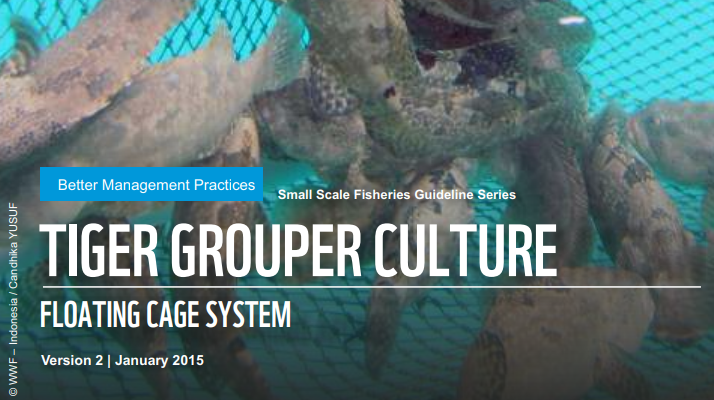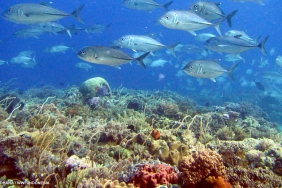BMP TIGER GROUPER FISH FARMING
By: Agis Riyani & Wahju Subachri (WWF-Indonesia Aquaculture Team)
Indonesia is one of the countries rich in biodiversity including various types of fish. One of them is tiger grouper, which is an important Indonesian fishery commodity and has bright marketing prospects, both for domestic and international markets.
The development of tiger grouper aquaculture in Indonesia is motivated by the high demand for this fish, which has resulted in overfishing using explosives or poisons. It is undeniable that aquaculture is the only way to meet market demand and reduce pressure on nature due to overfishing of tiger grouper.
Tiger grouper is widely cultivated with intensive methods using floating net cages in the sea. In practice, in addition to increasing income for farmers, tiger grouper cultivation is also faced with various problems, such as the accumulation of organic matter resulting from leftover feed, the increased use of feed derived from small fish (juvenile), the potential to reduce the carrying capacity of the environment derived from cultivation waste, the use of cross-bred seeds, and the risk of social conflicts caused by land use for cultivation.
In an effort to address these issues, WWF-Indonesia has developed a guide to tiger grouper aquaculture in a more environmentally friendly way, entitled "Better Management Practices (BMP) Tiger Grouper Aquaculture". The guide was developed through a process:
- Field data collection;
- Discussions involving tiger grouper aquaculture experts from government agencies, academia, and tiger grouper fish farmers;
- Literature study of other research results.
This BMP is a flexible (living document), which will continue to be refined in accordance with developments in the field and input from relevant parties. The "Tiger Grouper Aquaculture BMP" is one of WWF-Indonesia's contributions in supporting environmentally friendly aquaculture practices. The Tiger Grouper Aquaculture BMP can be used by small and medium scale farmers.





